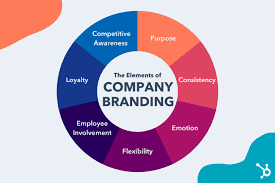DEC 2022, Vol 19, Issue 12
Overview
- Improve Your Brand by Listening to Your Employees
- How to Make Your Office Holiday Party Recovery-Friendly
- Time to Update Your AAPs
- Delaware Anti-Sexual Harassment Law Training Requirements
Improve Your Brand by Listening to Your Employees
Generating honest, two-way communication with your employees is critical to creating an effective employer brand. The key to successful employer branding begins with transparent communication with your employees.
Companies with the strongest employer branding practices are the ones that prioritize transparency which means being authentic, following through on promises, being open about successes and failures, and proactively sharing why decisions were made that affect everyone at the organization.
Employees want more transparency around employee communications; diversity, equity and inclusion (DE&I) goals; and salary information. It’s important for employees to know why certain decisions were made such as why a salary freeze is being implemented or the reasons behind a new policy. When it comes to DE&I, perfection is not expected, but employees want to know where we are today, where we've come from and where we are going. Salary is a delicate subject, and no one should have to guess how much money they are going to make. Give people the information they need to make an informed decision about applying for a new role.
Create Your Brand from the Employee Experience
The best employer brands are using employee experience at the forefront of their strategy. Companies recognize that without investment in and maintenance of a valuable employee experience, their employer brand is at risk. If the public face of a company doesn't match the experience employees actually have, their employer brand is less credible. Companies with authentic employer brands are sharing the real deal with potential new hires, fostering a two-way dialogue with employees, taking feedback they receive to heart, and making changes.
If you create exceptional employee experiences first, that will allow your employees to assist and influence successful recruiting. Great talent will come into the organization, probably stay longer, and when they leave—if the brand is strong enough—they refer others and often times, they boomerang back.
Consider asking your employees why they are proud to work at the company. Those responses can then be turned into the employer brand goal.
- - - -
How to Make Your Office Holiday Party Recovery-Friendly
For many of us, this December will be the first time since 2019 that employees can come together for an in-person holiday party. However, mental health experts warn that more employees may be dealing with alcohol addiction than in years past, and we should be mindful of employees who are in recovery or trying to cut back on their alcohol consumption. Substance-use struggles are a daily occurrence for the 1 in 10 Americans battling addiction, and it only got worse with the pandemic.
In the early days of the COVID-19 pandemic, an increasing number of people turned to alcohol to cope. About 22.3 million Americans—more than 9 percent of adults—live in recovery after some form of substance-use disorder, according to a peer-reviewed studypublished in October by the Recovery Research Institute at Massachusetts General Hospital.
While many have long awaited the opportunity to gather in person with co-workers to celebrate the holidays once again, it's important for those who are planning holiday celebrations to be aware of the significant increases in those reporting substance abuse issues since the pandemic, and to create an event everyone can enjoy and where everyone feels safe. Creating an event that is psychologically safe and inclusive is critically important for all employees to feel a sense of belonging.
Here are a few ways to make the office holiday party more inviting to employees who are in recovery or trying to cut back on their alcohol consumption.
Make the event about more than just drinking.
Create an event that employees can enjoy even if they're not drinking. Make sure the whole premise of the party isn't based on consumption of alcohol. Find an activity that gets everyone engaged and talking. Possible ideas include cookie decorating, games and contests, or attending a concert or sporting event.
An office wide gift exchange is a fun activity that involves everyone and be sure to set ground rules ahead of time by letting people know that no alcohol or substance-related gifts are allowed.
Keep the celebration optional.
Some employees may not want to celebrate the holidays at all, so be sure to keep holiday celebrations optional. Remind employees that it is their choice whether or not to participate, and company leadership should make it clear that attendance is optional.
Also, make it easy for employees to leave the party when they're ready. For instance, don't require employees to stay until after the CEO makes a toast. Allow employees to make an individual choice in how they will navigate the holiday party.
Consider having a daytime event.
Many holiday parties tend to be after work or on the weekends, and that timing is often associated with drinking. Consider a brunch or lunch party where it wouldn't be appropriate for drinking, as the staff will need to get back to work after.
Put mocktails on the menu.
The event invitation should clearly state that alcoholic and nonalcoholic beverages will be available, so employees know they will have options.
Rather than having only soda and juice available as alternatives to alcoholic drinks, be more creative and offer nonalcoholic beer and mocktails. Present the nonalcoholic option as equal.
For instance, place the nonalcoholic options on the bar along with wine, beer and other alcoholic drinks being served. If waiters are passing around trays of drinks, make sure there are nonalcoholic options on that tray. If there's a seated dinner, avoid having wine glasses on the table waiting to be filled by waiters, because to say no, an employee would have to put a hand over the glass and ask the waiter not to fill it.
The sober curious movement is growing, and lots of people are struggling with their alcohol consumption, so it's important to normalize not drinking.
- - - -
Time to Update Your AAPs
Many Affirmative Action Plans (AAPs) expire on December 31, 2022. Under federal law, government contractors and subcontractors with 50 or more employees who have entered into at least one contract of $50,000 or more with the federal government must prepare and maintain a written affirmative action program. AAPs must be developed within 120 days from the commencement of the contract, updated annually, and submitted to DOL during the first quarter of 2023.
- - - -
Delaware Anti-Sexual Harassment Law Training Requirements
The Delaware law that specifically addresses prohibition against sexual harassment under the Delaware Discrimination in Employment Act (DDEA), requires anti-sexual harassment training requirements for employers, with 50 or more employees in the state, every two years. The law went into effect on January 1, 2019 and in January 2023 it will again be time to conduct the mandatory interactive training.
Contact HR Strategies to schedule your organization’s required training or schedule individual employees for a live upcoming online interactive class.
- - - -
Contact HR Strategies staff at 302.376.8595 or info@hrstrategies.org if you would like support or would like to learn more about the items in this newsletter. Please contact us if you would like to be added to our Monthly Strategies mailing list or if you would like for us to add someone else to our list.



